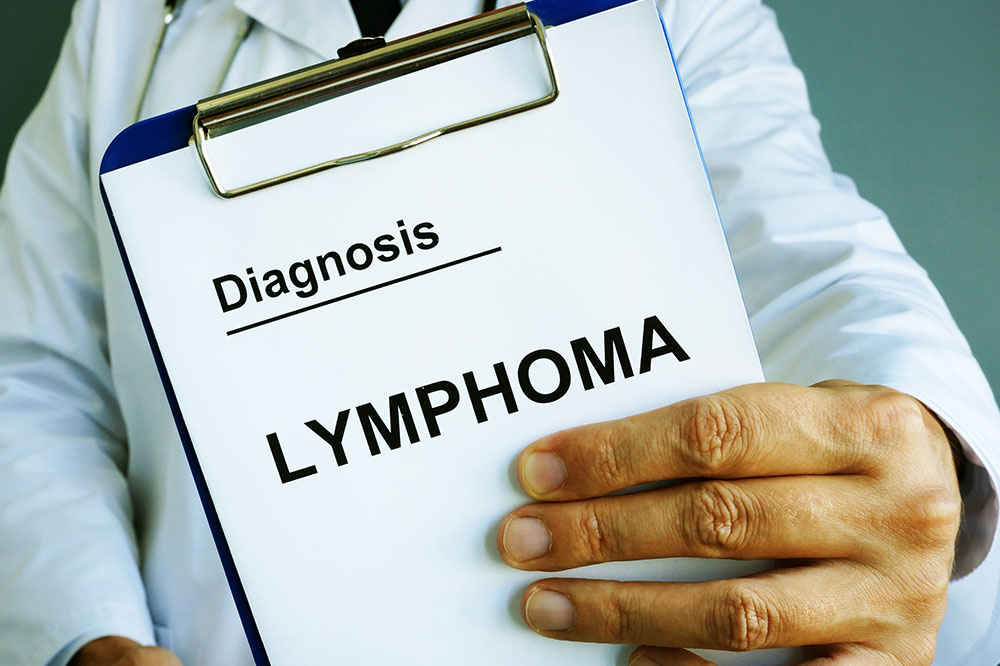
Lymphoma – Causes, risk factors, symptoms, and more
A cancer that starts in the lymph system’s infection-fighting cells is called lymphoma. These cells are in the bone marrow, thymus, spleen, lymph nodes, and other body parts. In lymphoma patients, the lymphocytes grow abrnomally out of control. The condition is broadly categorized as Hodgkin lymphoma and non-Hodgkin lymphoma. Both these types involve different kinds of lymphocyte cells. Continue reading to know about the causes, symptoms, and risk factors of the condition.
Causes
The exact cause of lymphoma is undetermined. However, the condition progresses when the disease-fighting WBCs undergo a genetic mutation. This mutation causes the cells to multiply rapidly, resulting in several infected lymphocytes that continue to multiply. Furthermore, the mutation allows the abnormal cells to survive even when the normal cells die. Consequently, there is a surplus of the infected and diseased lymphocytes in the lymph nodes, resulting in swelling in the liver, spleen, and lymph nodes.
Risk factors
Some risk factors aggravate one’s susceptibility to developing lymphoma.
Age
Some lymphomas are more prevalent in young adults, whereas others are common in people over 55.
Infections
Certain infections like Helicobacter pylori and Epstein-Barr virus aggravate one’s risk of developing the condition.
A weak immune system
Lymphoma is prevalent in people who undergo treatments to suppress their immune system or have immune system diseases.
Symptoms
Typically, lymphoma symptoms mimic those of viral diseases. The common cold is one such symptom, but in this case, the cold continues to stay for a prolonged duration. This often results in misdiagnosis.
Some people may see a swelling in the lymph nodes, while others may not experience any serious symptoms at all. One may experience swelling in the armpits, abdomen, groin, or neck. This swelling is typically painless, but when the enlarged glands press onto the bones, organs, or other structures, it can be painful.
People with lymphoma may also experience the below-listed symptoms. These are common in both types of lymphoma.
- Unusual itching
- Night sweats, chills, and fever
- Ongoing fever without any infection
- Persistent fatigue or feeling low on energy
- Decline in appetite
- Pain in lymph nodes
Additionally, some symptoms associated with non-Hodgkin lymphoma are:
- Swelling or pain in the abdomen
- Shortness of breath
- Persistent coughing
Weakness, pain, altered sensation, or paralysis may occur if the enlarged lymph nodes press against the spinal cord or the spinal nerves. Lymphoma spreads rapidly from the lymph nodes to other body parts via the lymphatic system. When malignant lymphocytes spread to other tissues, the immune system is unable to defend against these infections.
Diagnosis
If one’s doctor suspects the presence of lymphoma, they will first perform a biopsy for diagnosis. It involves removing the cells from enlarged lymph nodes. Next, a hematopathologist will assess these cells to check if they have any lymphoma cells and their type. Consequently, if the hematopathologist finds the presence of lymphoma cells, they will order further testing to check how far the cancer has spread. This will involve the following tests:
- Abdominal ultrasound
- Bone marrow aspiration, wherein a small liquid is taken from the bone marrow for diagnosis
- Examination of the nearby tissues or lymph nodes
- A chest X-ray
- Spinal tap or a lumbar puncture wherein a small fluid is taken from the spine for diagnosis
- Blood testing to assess one’s RBC and WBC count.
The doctor may also order MRI or CT scans to identify enlarged lymph nodes or other tumors.
Treatment options
The treatment option one opts for will depend on the type of lymphoma. A number of treatment options are available. In some cases, a combination of these therapies are used to counter the symptoms. The primary aim of treatment is to target and destroy as many cancerous cells as possible. One’s healthcare professional or cancer care team will recommend some of these treatment options:
CAR T-cell therapy
This type of treatment employs one’s own T cells. It stimulates these cells, triggering them to do more to target and eliminate the malignant cells. The treatment can help the healthy cells identify and attack malignant cells or fuel your body’s production of healthy cancer-fighting cells.
Targeted therapy
This therapy uses substances to attack specific proteins in cancer cells, without causing any damage to the normal cells. While this therapy may be administered on its own, it is also used along with chemotherapy in some cases.
Radiation therapy
It is mainly used to treat non-Hodgkin lymphomas. A focused beam of radition is used. This therapy’s aim is to combat cancer cells and prevent them from growing further. Although the procedure is usually painless, one may experience side effects like redness in skin, blistering, nausea, and feeling exhausted after the procedure.
Chemotherapy
Different substances are used to stop the growth of cancer cells. These substances circulate in the bloodstream. Hence, they can easily reach and target the malignant cells.
Bone marrow transplant
Doctors transplant the stem cells from the bone marrow and replace the damaged blood cells with healthy cells. A transplant may be needed if one’s bone marrow cells are infected and need to be replaced with healthy cells.




